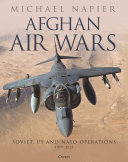

Most ebook files are in PDF format, so you can easily read them using various software such as Foxit Reader or directly on the Google Chrome browser.
Some ebook files are released by publishers in other formats such as .awz, .mobi, .epub, .fb2, etc. You may need to install specific software to read these formats on mobile/PC, such as Calibre.
Please read the tutorial at this link: https://ebookbell.com/faq
We offer FREE conversion to the popular formats you request; however, this may take some time. Therefore, right after payment, please email us, and we will try to provide the service as quickly as possible.
For some exceptional file formats or broken links (if any), please refrain from opening any disputes. Instead, email us first, and we will try to assist within a maximum of 6 hours.
EbookBell Team

5.0
80 reviewsUS and British forces, strongly supported by air power, invaded Afghanistan in late 2001 in response to the Al Qaida attacks on 9/11. What began as a small-scale operation of 2,500 troops with the limited objective of destroying Al Qaida became ever larger, growing to over 100,000 troops ten years later. This experience matched that of the Soviets after their invasion in late 1979, when they saw a massive increase in resistance by Mujahidin.
Afghan Air Wars details how Soviet aircraft including the MiG-21, MiG-23, Su-17 and Su-25, as well as Mi-8 and Mi-24 helicopters supported Soviet offensives in the Panjshir Valley and other regions. Despite these high-octane operations and overwhelming air superiority, Soviet forces eventually withdrew.
Some 20 years later, US and NATO air forces were deployed in similar roles. F-15E, F-16, F/A-18, A-10, Mirage, Harrier and Tornado aircraft all saw action in the skies over Afghanistan as did the CH-47 Chinook and AH-64 Apache helicopters. Mike Napier fully details their series of operations in a hostile environment as well as the advent of high-resolution targeting pods and Precision Guided Munitions (PGM) which enabled aircraft to stand off from threat areas and also to deploy their weapons with deadly accuracy. The conflict also saw the groundbreaking introduction of Remotely Piloted Vehicles (RPV) into routine air operations.
Afghan Air Wars is richly illustrated with over 240 images – both official photos and privately taken, in-theatre images which have not been previously published. It also includes first-hand accounts by aircrews involved to create a unique and comprehensive picture of the part played by air power over Afghanistan in the last 40 years.